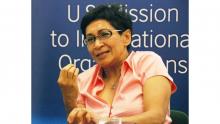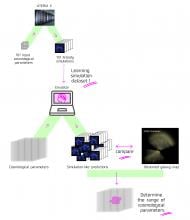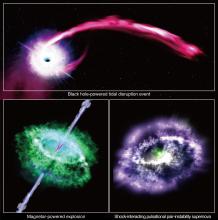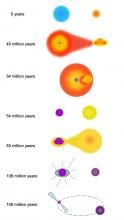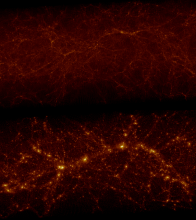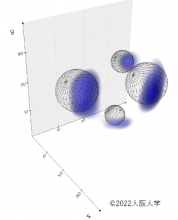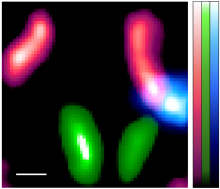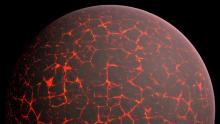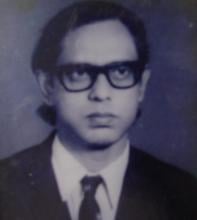Space
News
21 Sep 2022
Giants in History: Malaysia’s first astrophysicist, Mazlan binti Othman (born 11 December 1951) was instrumental in launching the country’s first microsatellite, and in sending Malaysia’s first astronaut, Sheikh Muszaphar Shukor, into space.
06 Sep 2022
Researchers have used giant lobes of gamma radiation to find that a small satellite galaxy of the Milky Way filled with dark matter, but whose emissions are more likely the result of millisecond pulsars blasting out cosmic particles.
29 Aug 2022
Researchers at Osaka Metropolitan University have observed "baby stars" in the Small Magellanic Cloud, having an environment similar to the early universe. Toward one of the baby stars, they found molecular outflow, which has similar properties to those seen in the Milky Way galaxy, giving a new perspective on the birth of stars.
26 Aug 2022
Asia Research News monitors the latest research news in Asia. Some highlights that caught our attention this week are dogs crying happy tears when their owner comes home, a new early warning system for solar flares, and burial practices that can tell us about ancient migration patterns.
19 Aug 2022
Asia Research News monitors the latest research news in Asia. Some highlights that caught our attention this week are particles from the Ryugu asteroid that look like water, mating strategies used by male spiders, and the effect of trimming mouse whiskers on their social development.
05 Aug 2022
Asia Research News monitors the latest research news in Asia. Some highlights that caught our attention this week are a treasure map for tracking ant biodiversity, tattoo ink that can monitor your health, and a newly discovered super-Earth.
23 Jul 2022
Researchers create 'time machine' to study ancestor galaxies, Robotics engineers pay attention to matters of the heart, Custom suits for delivery worms, Tough, light structures with superior impact resistance and Virtual training can reduce stress and anxiety. Read all in the July's Editor's Choice plus op-ed: To boost South Korea’s basic science, look to values, not just budgets, this month's Image & Asia Research News 2022 magazine pick - Better memristors for brain-like computing.
21 Jul 2022
A neural network method machine-learning technique has enabled researchers to develop a very fast and highly efficient software program that can make theoretical predictions about structure formation in the universe.
14 Jul 2022
A team of astronomers including Kavli IPMU discovered a mysterious short-duration astronomical event that was as bright as a superluminous supernova, but evolving much faster, reports a new study.
08 Jul 2022
Asia Research News monitors the latest research news in Asia. Some highlights that caught our attention this week are zero-waste poultry processing that can boost lab-grown meat, residential facilities made for low-gravity environments, and new methods of cloning cells.
01 Jul 2022
Asia Research News monitors the latest research news in Asia. Some highlights that caught our attention this week are cat-to-human COVID transmission, AI technology that interprets chicken squawks, and a lucky student’s experiment that will be performed in space.
24 Jun 2022
Asia Research News monitors the latest research news in Asia. Some highlights that caught our attention this week are using your breath to unlock your phone, the first successful launch of a Korean rocket, and the oldest bellybutton to date.
17 Jun 2022
Asia Research News monitors the latest research news in Asia. Some highlights that caught our attention this week are babies that dole out punishments, signals that might come from extraterrestrial civilizations, and repelling mosquitos by chewing catnip.
13 Jun 2022
An international team of researchers, including former Kavli IPMU Project Researcher Oscar Macias (currently at the University of Amsterdam), have found that old and fast spinning neutron stars called millisecond pulsars could be responsible for an unexplained signal from the center of our Milky Way.
10 Jun 2022
Asia Research News monitors the latest research news in Asia. Some highlights that caught our attention this week are amino acids from space, a robot finger wrapped in human skin, and what makes dogs "man’s best friend".
06 Jun 2022
Researchers have created time machine-like simulations recreate the full life cycle of some of the largest collections of galaxies observed in the distant universe 11 billion years ago.
26 May 2022
Particle accelerators have helped researcher to draw new leading limits on the existence of magnetic monopoles from the collisions of energetic cosmic rays bombarding the Earth’s atmosphere.
13 May 2022
Molecular robots work cooperatively in swarms, LED lights made from rice husk, Muonic x-rays safely see inside samples, Making a luminescent material shine brighter and How to counter vaccine hesitancy, Read all in the May Editor's Choice and this month's Asia Research News 2022 magazine pick - Absorbing impact: Inside the Head of a Woodpecker.
26 Apr 2022
Using muonic x-rays from a high-energy accelerator and a technology used for astronomical observations, researchers can now see the elemental makeup of sensitive samples without damaging them.
05 Apr 2022
Researchers have captured images of cells in mice using astronomy technology
04 Apr 2022
Far from the white sandy beaches and palm trees of Honolulu, Hawaii, astronomers from around the world travel to the top of a volcano that looks like a plateau on Mars. Naoyuki Tamura, a project associate professor at the Kavli Institute for the Physics and Mathematics of the Universe, has been making that same journey to the top of Maunakea to supervise the construction of a new instrument for the Subaru Telescope.
04 Apr 2022
伝統的な日本の大学のカルチャーの殻を破り、フラットで国際的な研究所として注目を集める東京工業大学地球生命研究所(ELSI)。今年で10年目を迎えたELSIの魅力や運営のコツについて廣瀬敬前所長が語った。
01 Apr 2022
Asia Research News monitors the latest research news in Asia. Some highlights that caught our attention this week are a magnetic slime, training for robotic surgeries, and the furthest star from Earth.
Events
Sorry, no events coming up for this topic.
Researchers
Sorry, no researchers coming up for this topic.
Giants in history
Chinese electron microscopy specialist Li Fanghua (6 January 1932 – 24 January 2020) facilitated the high-resolution imaging of crystal structures by eliminating interference.
Haisako Koyama (1916 – 1997) was a Japanese solar observer whose dedication to recording sunspots – cooler parts of the sun’s surface that appear dark – produced a sunspot record of historic importance.
Angelita Castro Kelly (1942-2015) was the first female Mission Operations Manager (MOM) of NASA. She spearheaded and supervised the Earth Observing System missions during its developmental stage.
Malaysia’s first astrophysicist, Mazlan binti Othman (born 11 December 1951) was instrumental in launching the country’s first microsatellite, and in sending Malaysia’s first astronaut, Sheikh Muszaphar Shukor, into space.
Meghnad Saha (6 October 1893 – 16 February 1956) was an Indian astrophysicist best known for formulating the Saha ionization equation which describes the chemical and physical properties of stars.
Subrahmanyan Chandrasekhar (19 October 1910 – 21 August 1995) was an Indian astrophysicist who studied the structure and evolution of stars.
Abdus Suttar Khan (c. 1941 – 31 January 2008) was a Bangladeshi engineer who spent a significant part of his career conducting aerospace research with NASA, United Technology and Alstom.
Bibha Chowdhuri (1913 – 2 June 1991) was an Indian physicist who researched on particle physics and cosmic rays. In 1936, she was the only female to complete a M.Sc. degree at the University of Calcutta.



